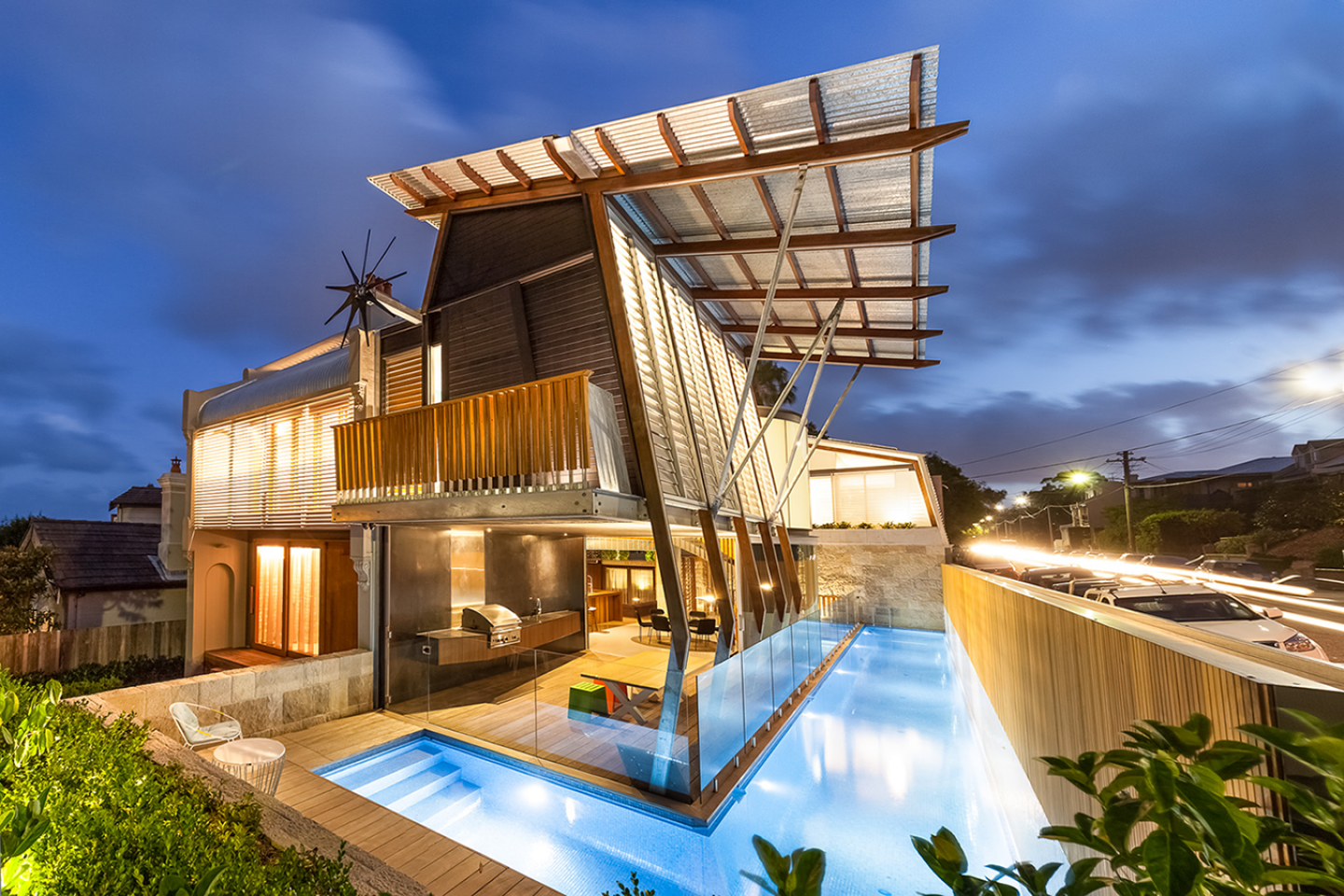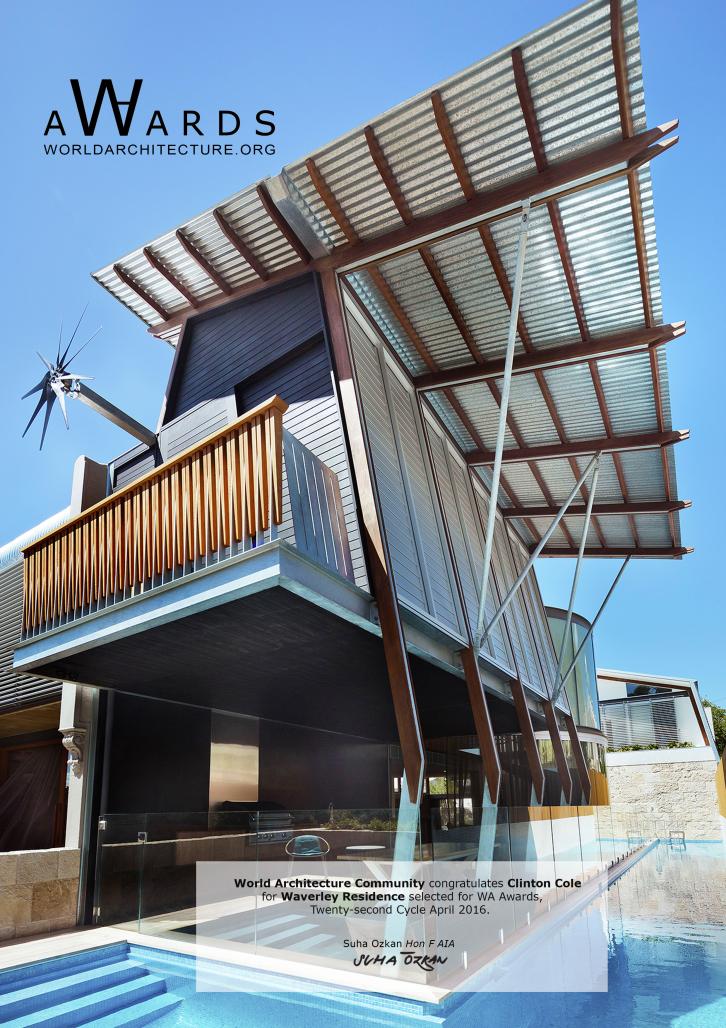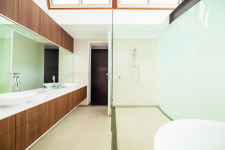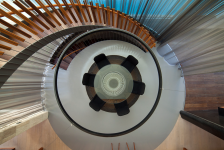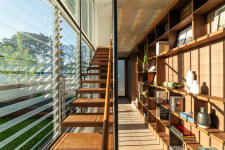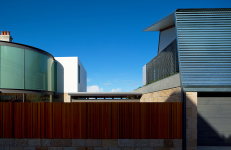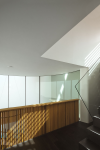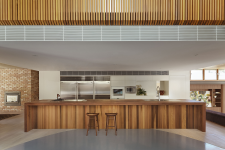The design is delivered as a sum of complex and beautifully detailed parts and challenges the notion of the singular architectural conceptual approach to contemporary architecture.
The project is located on the east coast of Australia near the beaches of Sydney. Designed for a young family with four children under the age of 6 the planning was generated by a need for growth, flexibility, diversity and the evolution of spatial function over time. The communal areas are all connected through non-restrictive pathways with visual connections between each space and each level achieved through internal courtyards and open, yet spatially and materially defined planning. The swimming pool is designed to reflect and refract sunlight into adjacent living spaces and cool warm summer breezes whilst creating an internal outlook in the evening. The dining room acts as the heart of the home with panoramic outlook to the swimming pool. The desire for the occupants to dine at a round table drove the form of the dining space and the stair configuration which accentuates the circular form and provides a dramatic circulation path through the home. The non-architectural costume of the round table also inspired the anti-conceptual decision to make each part of the home as uniquely important as the next. A complex range of rich spatial qualities is explored; from refuge and cave-like spaces through to elevated tree house-like spaces. A high priority is placed on sustainability in terms of both the embodied energy of the project with re-use of stone, brick and timber from the demolition of the original structure in the new works, to the minimal running costs of the project achieved with a photo-voltaic system, rainwater storage and a wind powered generator. Throughout the project there are materially dramatic transitions between multiple indoor and outdoor spaces as a response to prevailing and local breezes and the movement of the sun throughout the day and the seasons. The project seeks to heighten the living experience for the occupants whilst reducing running costs with natural light serving a dual role to achieve both thermal performance and spatial experience.
2013
2015
Clinton Cole, Johnny Mrljak
Waverley Residence by Clinton Cole in Australia won the WA Award Cycle 22. Please find below the WA Award poster for this project.
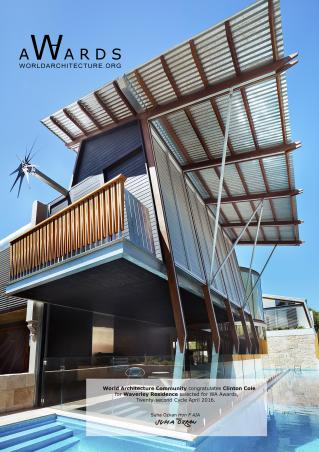
Downloaded 123 times.
Favorited 1 times
